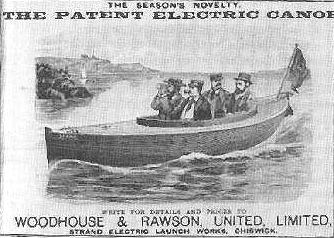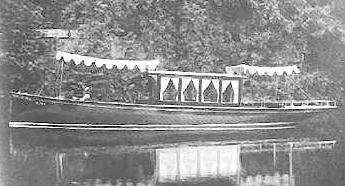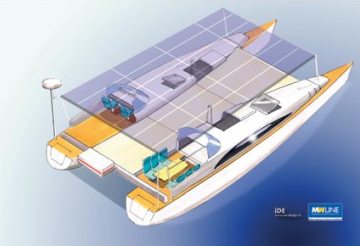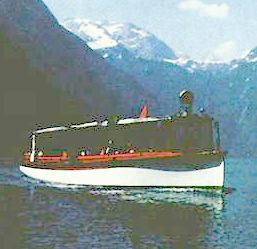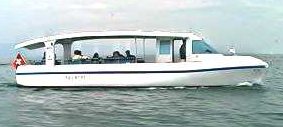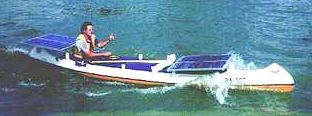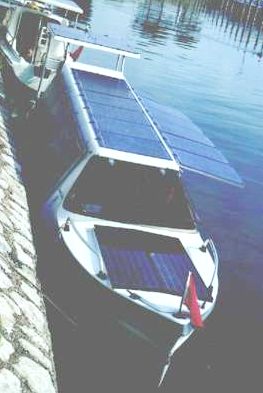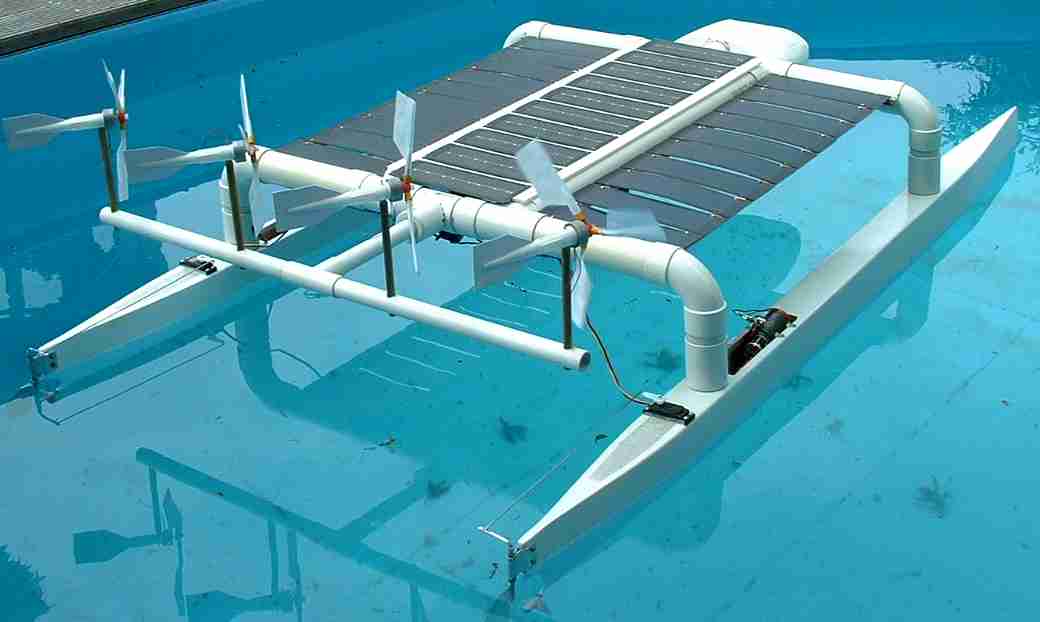|
ELECTRIC and SOLAR BOAT HISTORY
|
||||||||||||||||||||||||||||||||||||||||||||
|
HOME | BIOLOGY | FILMS | GEOGRAPHY | HISTORY | INDEX | INVESTORS | MUSIC | SOLAR BOATS | SPORT |
||||||||||||||||||||||||||||||||||||||||||||
|
Electric boats have been plying waterways in Europe since around 1890. In 1905 the 'Victory' was launched on the river Thames, at that time the largest electric boat in the world. She was 93 feet long and wood built. The Victory could carry 350 passengers.
Before the internal combustion engine became popular electric boating rivaled steam and horse drawn barges. Battery powered pleasure-boats were charged-up by steam powered generators and overhead cables. In England canals provided a comprehensive network for working narrow-boats carrying cargo.
After 1905 the internal combustion engine
became popular, ironically, due the the invention of the electric
starter motor. Solar boats
are electric boats, with independent, quiet and clean engines, whose
batteries store free energy from the sun.
CHRONOLOGY OF ELECTRIC BOATS FROM 1838
FIRST TRANSATLANTIC CROSSING ATTEMPT
Sun 21 Transatlantic solar powered catamaran
THE FUTURE
While history shows that electric boats are nothing new, solar generators are still in their infancy. Drive systems are improving with better motors and electronic controls. The ocean going electric boat is still to be proven. Although, Solar Navigator may put this one to bed in the next decade. Nevertheless, there are many design problems to be overcome, if electric boats are to one day rule the waves.
Perhaps, one way electric boats may take to the high seas sooner, is to look at solar assisted hybrids. Solar energy can be harnessed as free energy with auxiliary generators running on bio diesel.
On the seas, inland waters and river banks there are few connections to public electricity mains, which limits the use of battery powered boats. People who live on inland waterways on sailing boats and houseboats are dependent on batteries, much as the owners of electrically propelled boats. Batteries must of course be recharged, but instead of running petrol or diesel engines, a cleaner and quieter solution is to use solar electricity. Solar modules on a ship can provide all the electricity for most vessels cleanly for free - apart from the cost of the panels, etc.
Electric motors are more efficient than combustion engines, around 85%,compared to 35% for the best diesels and 28% for 4 stroke petrol engines. Cruise ships, submarines and torpedos all use electrical motors for propulsion. The reasons for this are the lack of noise and oscillation. Whereas, large passenger liners aiming for comfort, use smaller diesel generators in a hybrid arrangement, which also gives better overall efficiency.
Solar Boats In Europe -
In the USA -
Solar Boats Built by Engineering Students Wins National Competition Mailing list for Solar BoatsWorld championship of solar-electric regata
In Canada -
Solarboat projectSolar kit for boat
In Australia -
In Japan -
Free time with solarboats :
In Germany : Walking with solarboats in Nordhorn Energy - Environement
Planair in La Sagne Switzerland. Solar energy links
SSES, Société Suisse Energie Solaire Switzerland Service cantonal de l'Energie, Neuchâtel Switzerland Futurebike, Human Powered Vehicles (HPV) Switzerland Swissolar Switzerland Solarserver Germany Solarpolis Germany A lot of links in Austria
Solar Boat model by Jorma Ponkala
The Indian Ocean has already been crossed, but now the Sun 21 is attempting to cross the Atlantic. See the table below to follow its progress. What next? Who will be the first to attempt a world circumnavigation?
World contender: Solar Navigator (test rig) heading into wind - the latest design in soon to be on display for the Jules Verne Solar Trophy 2010
A taste for adventure capitalists
Solar Cola - a healthier alternative
|
||||||||||||||||||||||||||||||||||||||||||||
|
This
website
is Copyright © 1999 & 2006 NJK. The bird |
||||||||||||||||||||||||||||||||||||||||||||
|
AUTOMOTIVE | BLUEBIRD | ELECTRIC CARS | ELECTRIC CYCLES | SOLAR CARS |
||||||||||||||||||||||||||||||||||||||||||||
